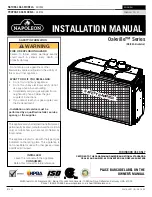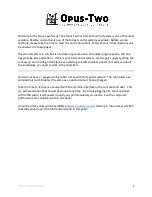
User's Guide ADI-8 DD © RME
13
7. The ADAT/TDIF to AES/EBU Converter
7.1 General
This ADI-8 DD's functional unit, called 'right part' further on, is an 8-channel format converter
from ADAT/TDIF or AES to AES/EBU.
Because the
Double Wire
and
Sample Split
(S/MUX) formats don't contain a coding, the ADI-8
DD cannot distinguish them from normal (44.1/48 kHz) material. Whether the AES/EBU out-
puts are supposed to work in Single (44.1/48 kHz) or Double Speed (88.2/96 kHz) has to be set
explicitly by the user. This happens in the clock section with the sample frequency button, acti-
vating DS.
Complete status displays (Lock, SyncCheck, Emphasis, Level) help to avoid wrong configura-
tion and wrong clock setup.
7.2 Inputs
The ADI-8 DD provides two digital inputs, both in ADAT optical and TDIF-1 format. The key
SOURCE sets the desired input active.
In normal operation only the MAIN inputs are used. When using more than the first 4 channels
at activated DS (Double Speed), the AUX inputs also have to be used.
The input data is passed on to the four AES/EBU outputs in logical order:
ADAT/TDIF
1
2
3
4
5
6
7
8
AES/EBU
1L
1R
2L
2R
3L
3R
4L
4R
If the input data is encoded with Sample Split, S/MUX or Double Line, the AES output has to be
set to DS mode manually. Every input contains the information of only 4 channels, for full 8
channels MAIN
and
AUX have to be used. 16 input channels 44.1/48 kHz are being converted
to 8 output channels 88.2/96 kHz. The channels are being distributed in the following manner:
ADAT/TDIF
MAIN+AUX
1/2
MAIN
3/4
MAIN
5/6
MAIN
7/8
MAIN
1/2
AUX
3/4
AUX
5/6
AUX
7/8
AUX
AES/EBU
1L
1R
2L
2R
3L
3R
4L
4R
The ADAT optical inputs of the ADI-8 DD are fully compatible with all ADAT optical outputs.
RME's unsurpassed Bitclock PLL prevents clicks and drop outs even in extreme varipitch op-
eration, and guarantees a fast and low jitter lock to the digital input signal. A usual TOSLINK
cable is sufficient for connection.
ADAT Main
Interface for the first or only device sending an ADAT signal to the ADI-8 DD. Carries the chan-
nels 1 to 8. When receiving a Double Speed signal, this input carries the channels 1 to 4.
ADAT AUX
Interface for the second device sending a Double Speed signal to the ADI-8 DD
.
Carries the
channels 5 to 8. Receives channels 9-16 in Copy Mode.













































